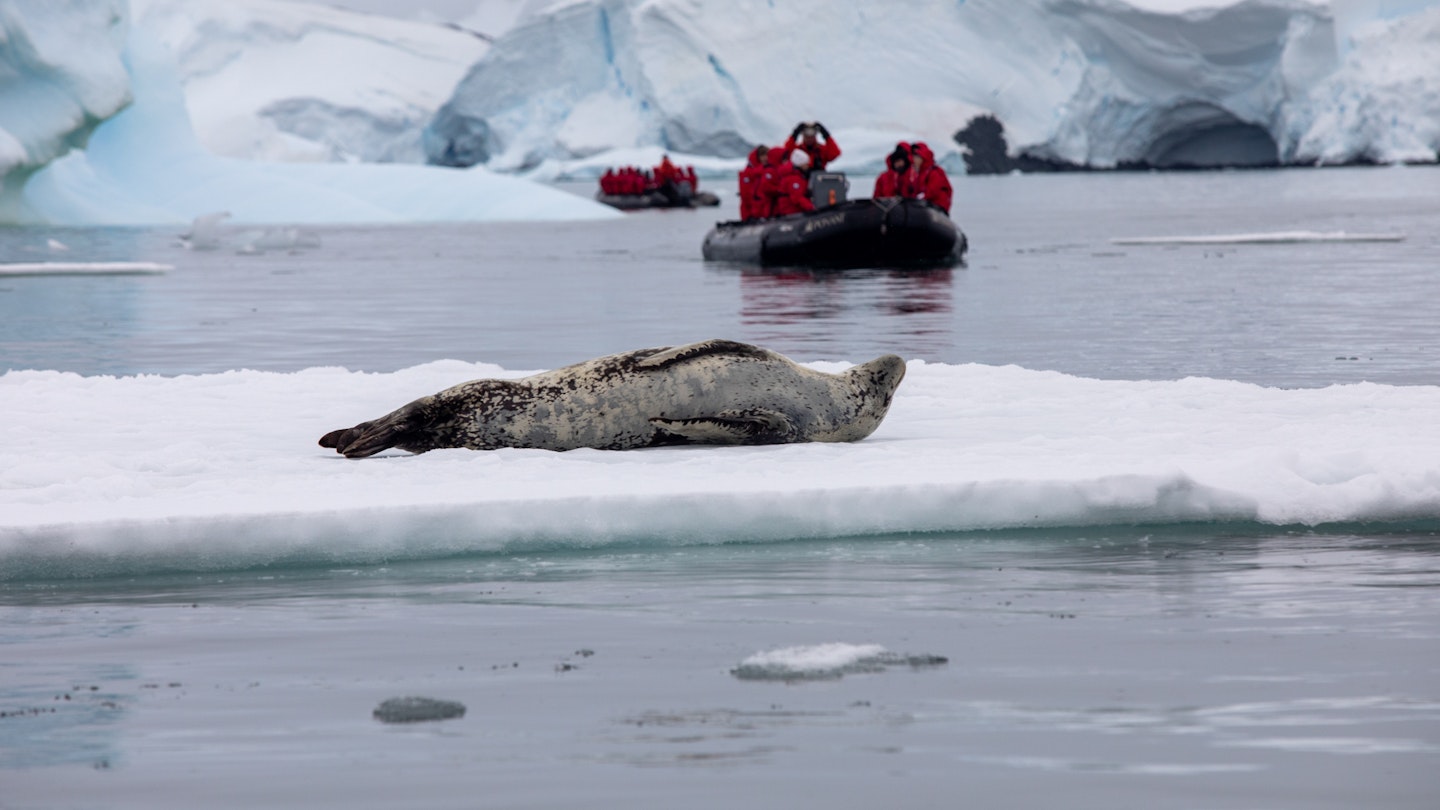Sustainable Travel in Antarctica
The Antarctic is one of the last undisturbed places on the planet. Human beings have only been traversing this isolated landscape for a mere 200 years since it was discovered in 1820. Unlike many other locations where our presence has had a negative impact, Antarctica still remains virtually unspoiled.
The History of Tourism to Antarctica
Tourists arrived in Antarctica in 1966 when Lars-Eric Lindblad, a Swedish-American entrepreneur and explorer, led the first group onboard a charted Argentine naval ship. Three years later, he commissioned his own vessel, the MS Lindblad Explore, and spent the next 20 years taking passengers on educational tours, pioneering what became “expedition cruising.” With the influx of commercial operators came the need to regulate the industry to protect scientific projects, historic sites and monuments, wildlife, and the pristine landscape. In 1991, the International Association of Antarctica Tour Operators (IAATO) was established to advocate and promote the practice of safe and environmentally responsible Antarctic travel.
IAATO works in concert with the Antarctic Treaty System. Antarctica is not owned by one nation but rather governed by this treaty, which was set up to foster scientific investigation. It mandates, “Antarctica shall be used for peaceful purposes only.” Scientific results must be publicly shared, and there shall be no military activity, nuclear testing, or territorial claims to the land. Since the signing of this treaty on December 1, 1959, in Washington, DC, by 12 countries, an additional 42 nations have become part of the system. To further guarantee Antarctica’s health is retained, the Protocol on Environmental Protection was added to The Treaty. Both governmental and tourism entities are bound by it.

IAATO plays its part proactively by following Antarctic Treaty rules, as well as creating its own comprehensive set of guidelines for its members to ensure visitors have an enriching and educational experience without impacting the environment. Organizations see going to Antarctica as a privilege, not a right.
How to Visit Antarctica Sustainably
So what do travelers need to consider when looking for a tour operator that values penguins over profits? Here are some factors to consider:
- Different types of vessels: From hands-on sailing yachts to polar research boats.
- Departure locations: Most tours depart from Argentina or Chile, though some come from Australia, New Zealand, Tasmania, and occasionally South Africa.
- Price range: A trip to Antarctica can average between $6,000 to $25,000, depending on accommodations, season, length of voyage, and amenities.
Passenger size matters in terms of your experience. Ships carrying 500 visitors or more are not permitted to go ashore, while ships with fewer can land at approved sites, but only one ship at a time. A cap is also placed on how many ships can visit the same site on the same day. As an additional layer of protection from overuse, only 50-100 people are allowed on land at a time, with specific requirements for crew-to-guest ratios.

Before going ashore, passengers attend mandatory briefings to understand where they can walk while being mindful of wildlife and the environment. They must wash their clothes, boots, and gear to prevent the spread of foreign matter or disease. Wildlife always takes precedence, and a distance of at least 15 to generally 300ft must be maintained depending on the species being viewed.
Educational Components of Cruises
While all operators are encouraged to include an educational component, the richness of these programs varies. The quality of guest lecturers and the expertise of onboard expedition teams can significantly enhance your Antarctic experience. Educational components help raise awareness about the fragile ecosystem and the challenges it faces, such as climate change.

As passenger volumes increase, the quality of onboard teams will become pivotal in maintaining safe and enriching landings in varied conditions. The experience of the crew can significantly enhance your travel, as they are well-versed in the unique challenges posed by the Antarctic environment.
In conclusion, while Antarctic tourism has seen a marked increase, the current tourism footprint remains minimal compared to broader environmental challenges. Sustainable practices and awareness about climate change are more pressing than ever. The goal of every conscientious traveler should be to engage responsibly with this fragile ecosystem while advocating for its preservation.





